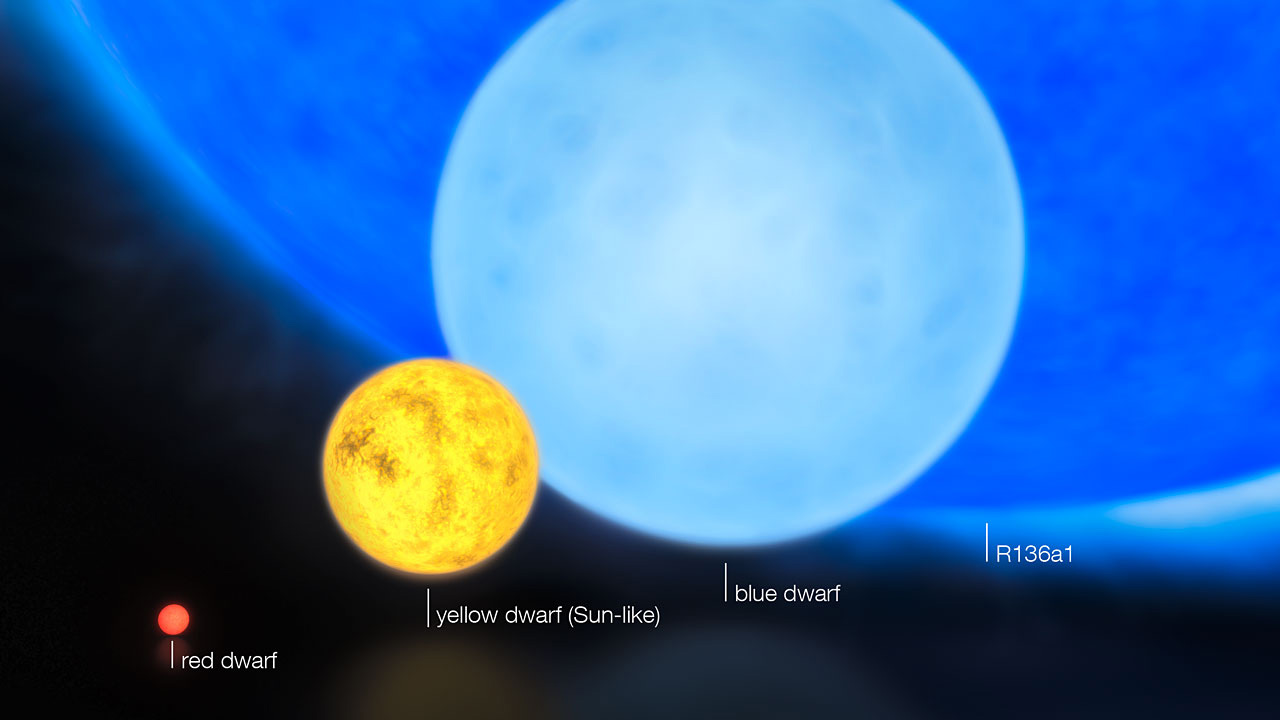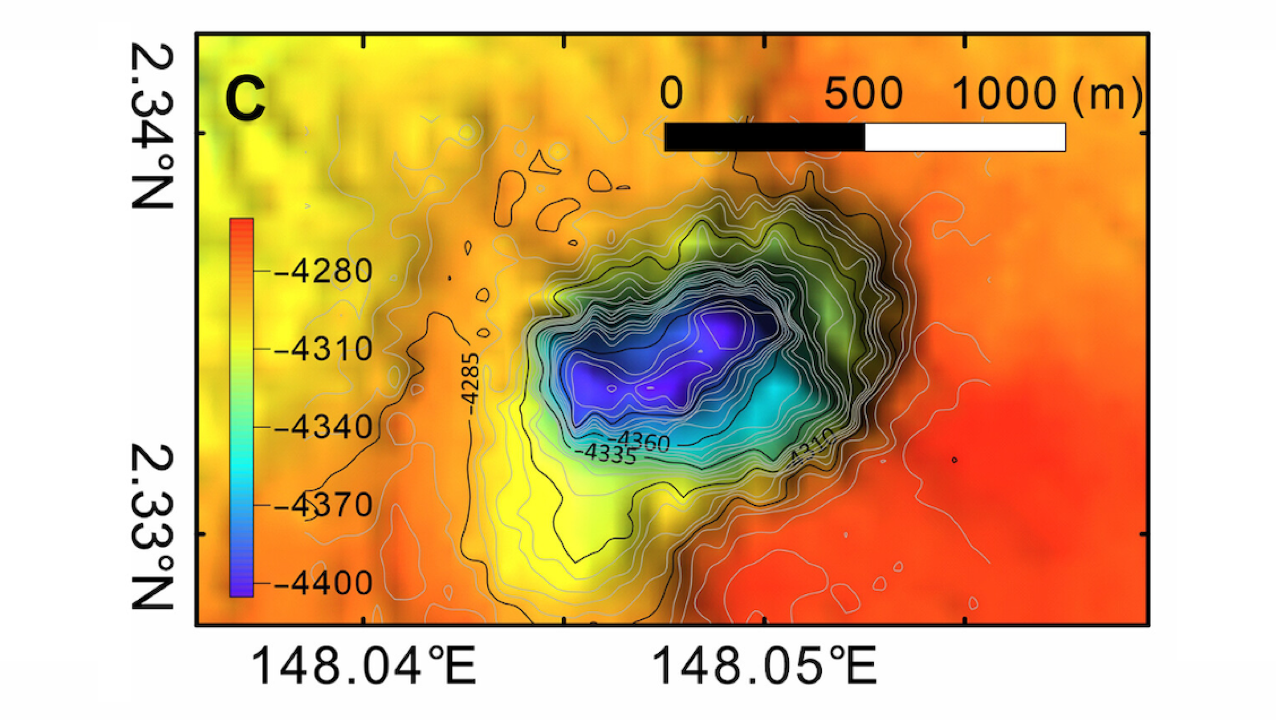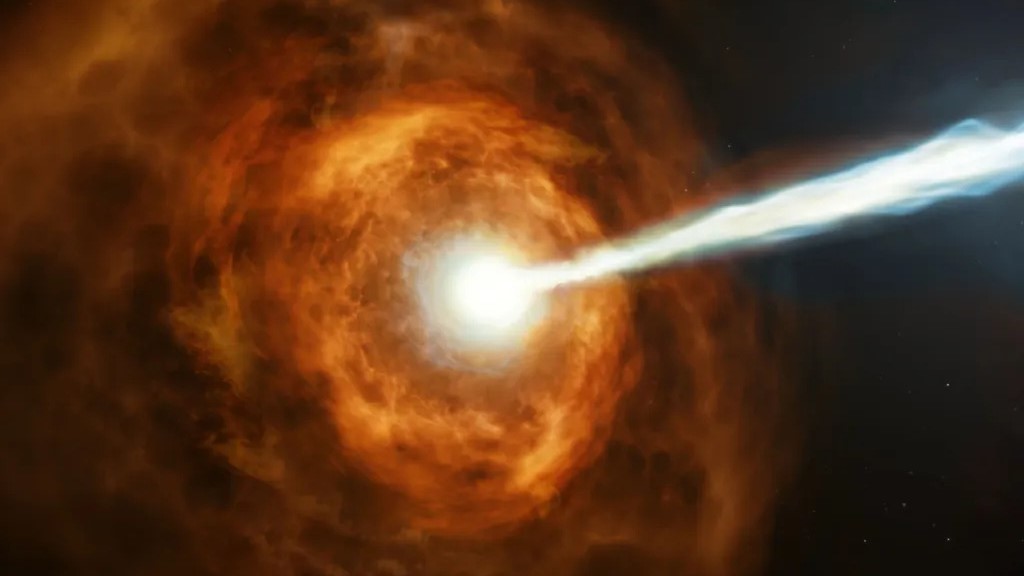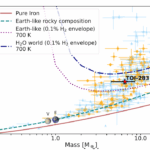Now Reading: How do the biggest stars in the universe grow so large?
-
01
How do the biggest stars in the universe grow so large?
How do the biggest stars in the universe grow so large?

There are several candidates for the biggest star in the universe. One of them, VY Canis Majoris, is over 1,500 times the width of the sun. If it were placed in our solar system, it would stretch to nearly the orbit of Saturn. But how can such a beast exist? The answer, as always, is physics.
VY Canis Majoris is a red hypergiant star located about 6,000 light-years away. Although it is one of the largest stars, it’s not nearly the most massive. At roughly 17 solar masses, it’s still quite hefty. However, it’s far smaller than the most massive stars, which can reach up to 300 solar masses. Yet VY Canis Majoris absolutely dwarfs those behemoths in terms of diameter. So what’s going on?
The answer is that VY Canis Majoris is near the end of its life, and we just happen to be witnessing it at a very lucky time.
All stars fuse hydrogen in their cores, converting it to helium. As the stars age, the helium builds up like too much industrial pollution. It gets in the way of fusion reactions, which forces those reactions to occur at a faster and faster pace to maintain equilibrium.
Eventually, right before the star begins its end-of-life phase, there is so much helium built up in the core that hydrogen fusion moves into a shell around it. This fusion, now displaced from the core, emits an enormous amount of radiation. There is so much radiation that it pushes on the rest of the star, inflating it.
We call this the red giant phase of a star. In about 4.5 billion years, the sun will undergo such a transformation, swelling to reach Earth’s orbit. Because the atmosphere of a star in this stage is so far detached from the core, it cools off, causing the red color.
Another familiar star, Betelgeuse (the shoulder of Orion), is already a red giant. Astronomers estimate that it will explode as a supernova sometime within the next million years. Despite their cool temperature, red giants have enormous surface areas, making them incredibly bright. In fact, because red giants are so luminous, many of the stars visible to the naked eye are near the ends of their lives.

The same is true for UY Canis Majoris. It is highly unstable and variable, and it constantly pulses, dims and brightens again. Soon, it will explode in a supernova. In fact, it may have already done so at any point in the past 6,000 years but the light from that momentous event may not have reached us yet.
As for the most massive star, that honor goes to R136a1. Although it’s only a few times wider than the sun, it is around 300 solar masses, making it just about as massive as a star can be. That’s because of the same fusion reactions that keep a star in equilibrium. The intensity of the fusion rates is driven by a star’s mass, with higher masses increasing the pressure in the core. But higher fusion rates mean more radiation is produced, and more radiation means more energy is transferred to the star’s atmosphere.
At roughly 300 solar masses, the core of a star produces so much radiation that it simply blows away the rest of the star.
RELATED STORIES:
Owing to its tremendous mass, R136a1 is also the brightest known star, shining with an intensity of over 4.5 million suns. But it’s also so hot that most of that radiation is emitted in the ultraviolet region of the electromagnetic spectrum. So visibly, the star appears “only” about 167,000 times brighter than the sun to the naked eye.
But if you did want to look at R136a1, you’d better keep your distance. If this star were only 40 light-years away, it would still outshine Venus. If it were placed at the distance to our nearest stellar neighbor, Proxima Centauri, it would be brighter than the full moon.
Massive stars do not live long, however. In a few million years, R136a1 will join UV Canis Majoris and exit the cosmic scene. But star formation continues in the Milky Way, and when these giants fall, more monsters will rise to take their place.
Stay Informed With the Latest & Most Important News
-
 012024 in Review: Highlights from NASA in Silicon Valley
012024 in Review: Highlights from NASA in Silicon Valley -
 02Panasonic Leica Summilux DG 15mm f/1.7 ASPH review
02Panasonic Leica Summilux DG 15mm f/1.7 ASPH review -
 03How New NASA, India Earth Satellite NISAR Will See Earth
03How New NASA, India Earth Satellite NISAR Will See Earth -
 04And Thus Begins A New Year For Life On Earth
04And Thus Begins A New Year For Life On Earth -
 05Astronomy Activation Ambassadors: A New Era
05Astronomy Activation Ambassadors: A New Era -
06SpaceX launch surge helps set new global launch record in 2024
-
 07Space Force plans new ‘Futures Command’ amid pressure to speed up modernization
07Space Force plans new ‘Futures Command’ amid pressure to speed up modernization




















